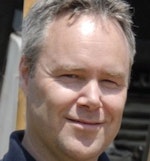Sponsored Blog
For well over a decade now, contractors in heavy and highway construction have been applying 2D and 3D technologies to grade control, creating very accurate surfaces... upon which they typically pave using not-so-accurate conventional methods. Now, aftermarket manufacturers are rolling out technology solutions for the whole paving workflow... from base to finish surface. These systems are designed to extend that accuracy from the dirt to the finished pavement for new or existing roads, airports and parking lots. Available technology includes 3D systems using total stations for the precise control of milling machines and pavers, 2D systems using sonic sensors for pavers and GNSS or total station based systems for asphalt compactors.
- 3D total station based systems for milling machines are ideal for existing road re-surfacing. These highly accurate systems create a smoother base by milling to a specific design rather than simply removing the top few inches. By doing so, they remove any existing surface waves, dips or bumps during the milling process. Milling to a millimeter-precise digital design means less wear on the mill and less finish material needs to be used afterward.
- 2D paving systems using high-accuracy sonic averaging allow you to achieve tight surface tolerances. Most of these are easy-to-use systems that are ideal for use on precision milled surfaces.
- 3D paving systems using total station technology provide very accurate control of the screed. Using 3D paving systems, you can increase road smoothness using less asphalt than with traditional paving methods, lay complex designs such as super-elevated curves, and meet rigorous smoothness specs... which in many cases means bonus income. Plus, using a digital model can create a “stringless” job site... eliminating all the associated setup time and the possibility that the string-lines are moved or damaged. Stringless sites also improve truck productivity by eliminating the need to maneuver around stakes and string-lines.
- Finally, GNSS or total station based compaction control systems eliminate much of the guesswork in the asphalt compaction phase. They allow you to achieve more consistent compaction to target design density. Available pass count mapping and temperature sensing can allow operators to roll more efficient patterns, increase productivity, save fuel and generate reporting and documentation.
If you decide to explore these solutions, there are a couple of things to keep in mind. 3D systems can be tremendously productive... but it’s critical that your digital design is right. Make sure your technology vendor has data prep software that works across all phases of your projects. Also, you’ll realize better long-term return on investment if you work with a company that lets you leverage technology components and software across as many machines and processes as possible. For example, paving systems that leverage many of the same system components and software as milling systems.
If you build, pave or re-surface roads take a look at the new generation of paving control solutions. They can help you produce a higher quality product in less time with less material cost and more profit. What’s not to like about that?
You can read many stories about why and how customers made the decision to implement technology, and what their experience has been, at trimble-productivity.com.

